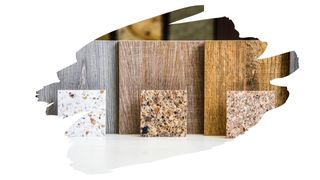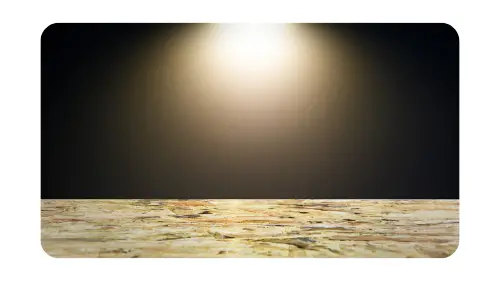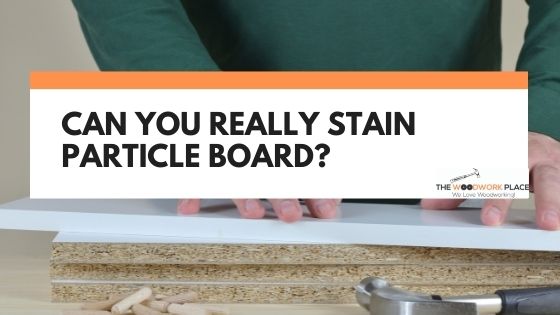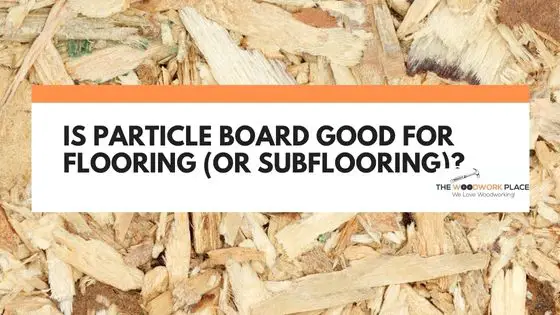Let’s face it: Particle board isn’t one of the most durable manufactured woods on the market.
Otherwise known as chipboard, this wood composite is fairly fragile compared to Plywood or MDF.
Related Post: Is There A Type Of Plywood That Doesn’t Warp? (Solved!)
And that’s notwithstanding Particle boards tendency to swell easily when even so much as a hint of moisture gets into it.
But despite its disadvantages, one big benefit it carries is its price. It is much, much cheaper than plywood.
And this cost saving aspect is why particle board is popularly used to make furniture, floor underlay, cabinets and countertops.
Now, kitchen countertops are a prime spot for wet spills and steaming pots and pans.
Related Post: MDF Or Plywood For Countertops: Which One’s Better For Your Kitchen?
Which means, that when it comes to particle board kitchen countertops, you need to be doubly sure that counter has been sealed up tight.
So, what is the best way to go about sealing a particle board countertop?
It depends on whether that particle board surface has been laminated or not. If it has been finished with a laminated coat, (and the surface is still in good condition), then you can seal it with a clear epoxy coat.
However, if that particle board is unfinished, (or it is crumbling or otherwise exposed), then you should use an exterior-grade oil-based polyurethane sealer. This is mostly because an oil-based polyurethane will do a better job at sinking into those open surface cracks, (sealing particle board from the inside out). It’ll also do a better job at hiding small yet visible damage done to the countertop.
Related Post: Does Polyurethane Hide Sanding Marks? (7 Things You Need To Know)
Both epoxy and polyurethane will provide that countertop a goodly amount of waterproofing and heat resistance (although some epoxy products can handle much higher temperatures than polyurethane).
This is, of course, all provided you’ve first done whatever you can do to prevent particle board from (continuing to) crumbling in the first place. So let’s dive a little into that…

This post may contain affiliate links to products that we receive a commission for (at no additional cost to you). Learn more here.
How Do You Keep Particle Board From Crumbling?
The answer to this is pretty simple… you need to do everything you can to keep water from getting into it.
Epoxy resin, solvent based polyurethane, and solvent based acrylic sealers, all can work at making particle board water resistant.
Can You Really Waterproof And Seal Particle Board?
Particle board may soak up water like a sponge, but don’t let that take away from the fact that it is still surprisingly easy to seal up.
Just stick to sealants that aren’t water-based. And where possible, opt for a sealer that can sink into that particle board surface (for extra protection).
Can You Put Polyurethane On Particle Board?
It depends on the type of poly.
If it is a water-based polyurethane sealer, then no you can’t. Water-based poly sealers are a problem when it comes to particle board because, well, they contain water.
Related Post: Can You Really Stain Particle Board? (+ How You Can Make It Look Great!)
Sealing Particle Board With Water Based Vs Solvent Based Polyurethane
Water based polyurethane dries through the process of evaporation. After you coat it onto a wooden surface, the water in the polyurethane solution evaporates, leaving behind a solid resin.
And this is a problem because particle board doesn’t play well with water. So the last thing you want to do is add coat after coat of a water-laden poly onto it.
Now solvent based polyurethanes, such as oil-based poly, don’t go through an evaporation drying process. Instead, their drying process involves undergoing a chemical change that turns them from liquid to hard resin.
This process takes much, much longer than evaporation. But, the end result is a longer lasting and more durable poly seal.

So, What’s The Best Sealant Product For Particle Board?
If you are in the market for an oil-based polyurethane sealer, then get your hands on the Varathane® Premium Polyurethane Oil-Based Wood Finish.
You can check out the latest prices for this sealer over on Rustoleum.com
This product works best on bare particle board, so don’t brush it onto a laminated surface. If the particle board is crumbling, try to remove the laminate first. You will need some lacquer thinner, a careful hand, and a bit of patience… but it is possible.
Simply follow CountertopsINbuffalo’s quick guide below to getting that laminate coat removed:
Now, if that particle board is laminated and in relatively good condition, then you are better off using an epoxy resin to coat the countertop.
In which case, a penetrating epoxy resin product (that’ll dry into a clear coat) is what you need. See if you can get your hands on Smith’s Clear Penetrating Epoxy Sealer. It offers marine-industry levels of waterproofing, while actively working to stall and prevent wood rot.
You can find the latest price for this product over on Fisheries Supply.
So To Sum Up…
If that countertop is starting to crumble, some 2 or 3 coats of oil-based polyurethane will stop it from further falling apart.
The poly sealer acts both as a sealer (preventing water from getting in), and as an adhesive (helping glue those loosening particle chips back together).
That doesn’t mean that polyurethane coats aren’t without their own problems in the kitchen. Especially since polyurethane surfaces can be prone to visible water rings too.
Related Post: Will Polyurethane Prevent Water Rings? (Best Practice Revealed)
But, if you want to seal particle board, your focus needs to be on keeping moisture out as much as you can. And a solvent-based poly sealer is your best shot at doing just that.



